 W
WThe Australian Classification Board is an Australian Government statutory body responsible for the classification and censorship of films, video games and publications for exhibition, sale or hire in Australia. The ACB was established in 1970 and was once part of the Office of Film and Literature Classification (OFLC), which was dissolved in 2006. The Department of Communications and the Arts provided administrative support to the ACB from 2006 until 2020, when it was merged into the 'mega department' of the Department of Infrastructure, Transport, Regional Development and Communications. Decisions made by the ACB may be reviewed by the Australian Classification Review Board. The ACB now operates under the Commonwealth Classification Act 1995. The ACB is made up of a director, a deputy director, and three other board members, appointed by the government for three- or four-year terms, and temporary board members. The ACB is located in Sydney, New South Wales.
 W
WThe Central Board of Film Certification (CBFC) is a statutory film-certification body in the Ministry of Information and Broadcasting of the Government of India. It is tasked with "regulating the public exhibition of films under the provisions of the Cinematograph Act 1952." Films screened in cinemas and on television may only be publicly exhibited in India after certification by the board.
 W
WEirin (映倫) is the abbreviated name of the Film Classification and Rating Organization , Japan's movie regulator. Eirin was established on the model of the American Motion Picture Producers and Distributors Association's Production Code Administration in June 1949, on the instructions of the US occupation force. It classifies films into one of four categories depending on their suitability for viewing by minors of different ages.
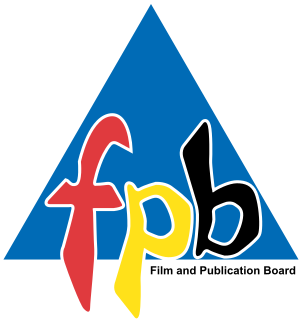 W
WThe Film and Publication Board, is a content-classification and regulation authority in South Africa, operating under the Minister of Communications. The FPB was established in 1996 under the Films and Publications Act, ostensibly to tackle issues of child pornography and child abuse, as well as to provide ratings to publicly consumed media such as movies, music and television programs. Under these directives, its mandate can be considered one of state censorship.
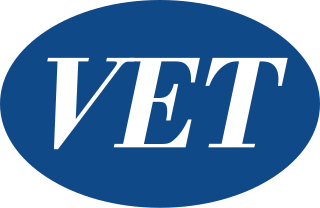 W
WThe Finnish Board of Film Classification was an official institution of the Finnish Ministry of Education. From 1946 until the end of year 2011, the VET/SFB was responsible for inspecting and rating the content of movies and video games. In the beginning of 2012, the VET/SFB was dissolved and its functions were transferred to the Finnish Centre for Media Education and Audiovisual Media, likewise operating under the Ministry of Education.
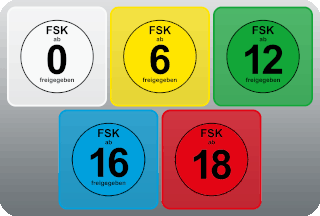 W
WThe Freiwillige Selbstkontrolle der Filmwirtschaft is a German motion picture rating system organization run by the Spitzenorganisation der Filmwirtschaft based in Wiesbaden.
 W
WThe Hong Kong motion picture rating system is a legal system of movie screening and rating. An official government agency issues ratings for any movie that will be shown in Hong Kong cinemas.
 W
WThe Irish Film Classification Office (IFCO) is the organisation responsible for films, television programmes, and some video game classification and censorship within Ireland. Where restrictions are placed by the IFCO, they are legally binding.
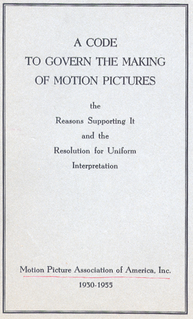 W
WThe Motion Picture Production Code was a set of industry guidelines for the self-censorship of content that was applied to most United States motion pictures released by major studios from 1934 to 1968. It is also popularly known as the Hays Code, after Will H. Hays, who was the president of the Motion Picture Producers and Distributors of America (MPPDA) from 1922 to 1945. Under Hays' leadership, the MPPDA, later known as the Motion Picture Association of America (MPAA), adopted the Production Code in 1930 and began rigidly enforcing it in mid-1934. The Production Code spelled out what was acceptable and unacceptable content for motion pictures produced for a public audience in the United States.
 W
WThe Movie and Television Review and Classification Board is a Philippine government agency under the Office of the President of the Philippines that is responsible for the classification and review of television programs, motion pictures and home videos.
 W
WThe National Bureau of Classification (NBC), previously the Film Censor Board of Maldives, is a government office founded on 21 May 1956 with the objective of presenting and promoting cinema and theatrical performances for the benefit of the Maldivian people.
 W
WThe National Media Council (NMC) is a federal institution of the United Arab Emirates (UAE) that was established by virtue of Federal Law No. 1 of 2006. It promotes and supports all media-related initiatives and activities in the UAE and abroad. Goals set for the council are “Providing an integrated regulatory environment conductive to the development of the media sector in the UAE, highlighting the UAE accomplishments in media both nationally and internationally and ensuring that all administration services are delivered with high quality, efficiency and transparency”.
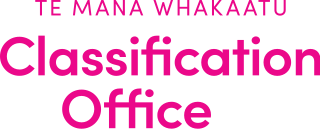 W
WThe Office of Film and Literature Classification is an independent Crown entity established under Films, Videos, and Publications Classification Act 1993 responsible for censorship and classification of publications in New Zealand. A "publication" is defined broadly to be any thing that shows an image, representation, sign, statement, or word. This includes films, video games, books, magazines, CDs, T-shirts, street signs, jigsaw puzzles, drink cans, and campervans. The chairperson of the OFLC is the Chief Censor, a position that is selected by the Governor-General on the recommendation of the Minister of Internal Affairs with the agreement of the Minister of Women's Affairs and the Minister of Justice. As of 8 May 2017, the current Chief Censor is David Shanks.
 W
WThe Régie du cinéma was a provincial film classification organization responsible for the motion picture rating system within the Canadian province of Quebec; of which its roles were merged into the Government of Quebec's Ministry of Culture and Communications on 1 April 2017. Its mandate was to classify and approve films for distribution to Quebec's movie theatres and home video outlets. Its purview devolved from the Cinema Act. As of 2010, the Agency had a net income of 7 million dollars and has accumulated more than 85 million dollars in cash in their bank account.
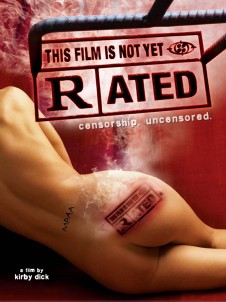 W
WThis Film Is Not Yet Rated is a 2006 American documentary film about the Motion Picture Association of America's rating system and its effect on American culture, directed by Kirby Dick and produced by Eddie Schmidt. The film premiered at the 2006 Sundance Film Festival and was granted a limited theatrical release on September 1, 2006. The film's producer, IFC, aired the film later that year.